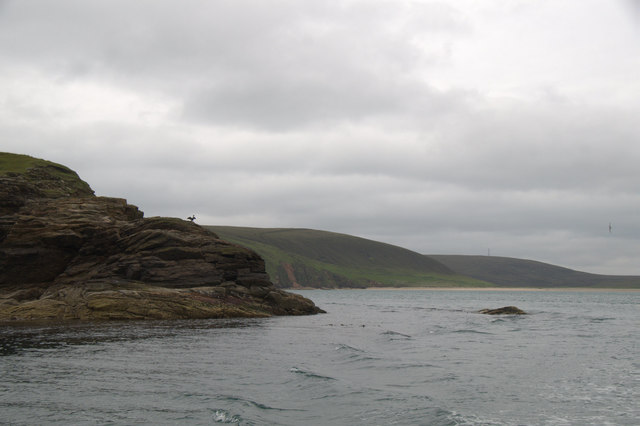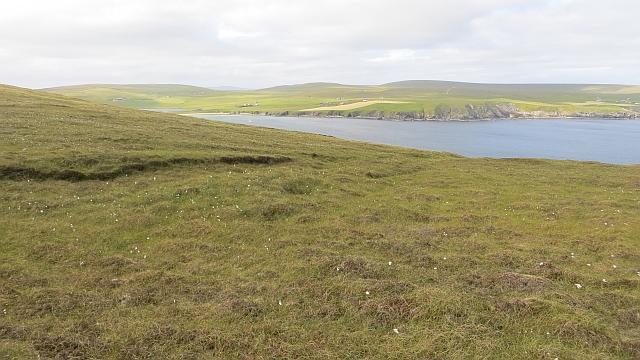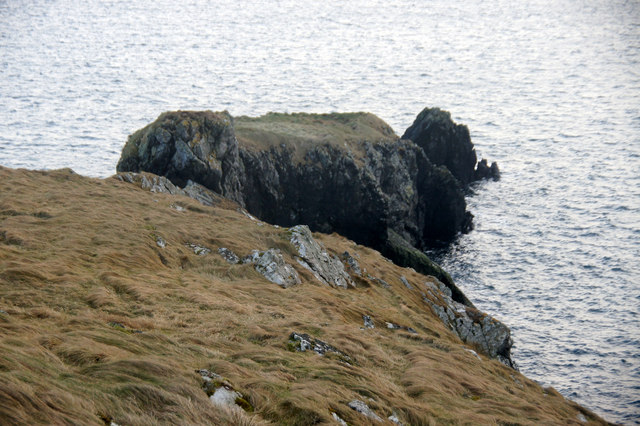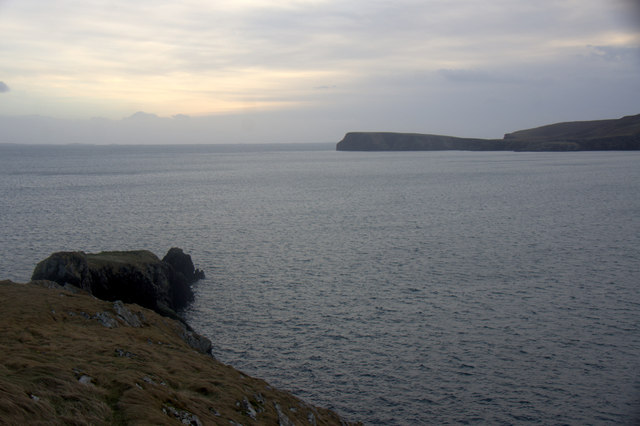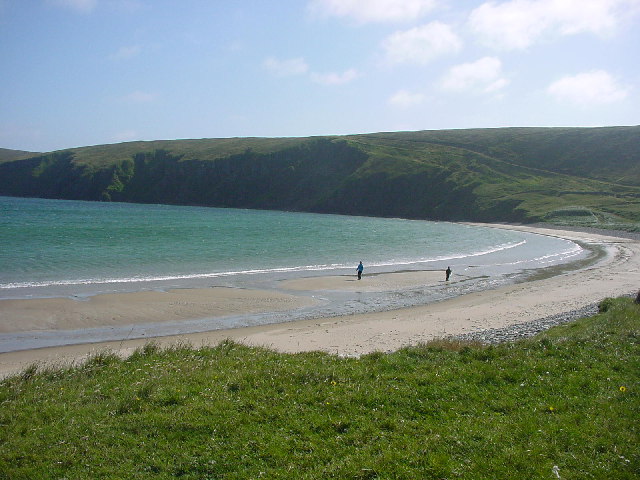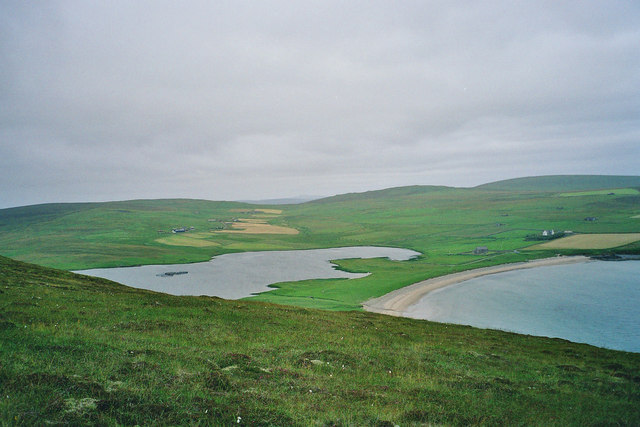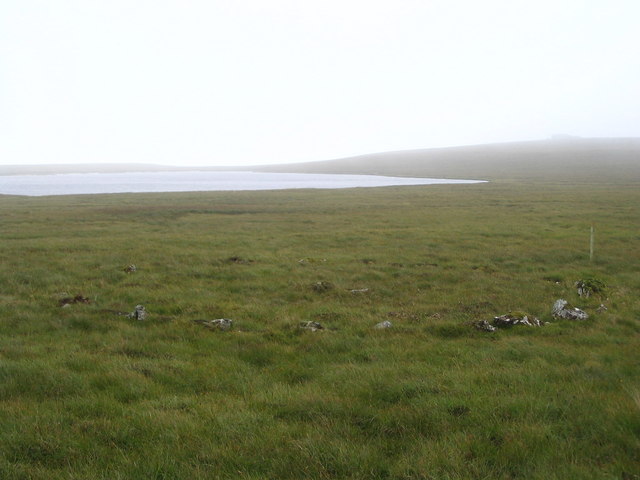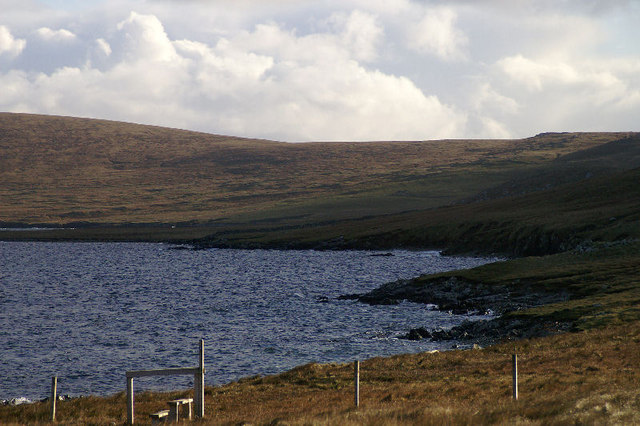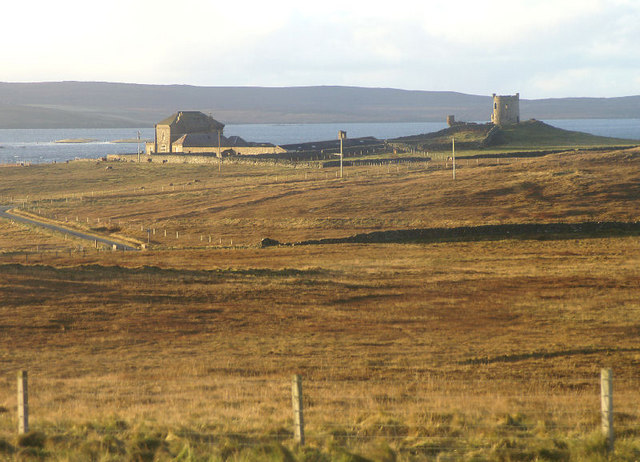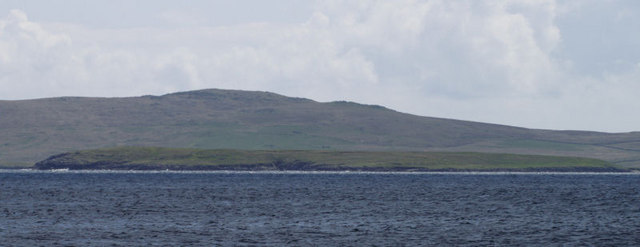Mires of Bydons
Coastal Marsh, Saltings in Shetland
Scotland
Mires of Bydons
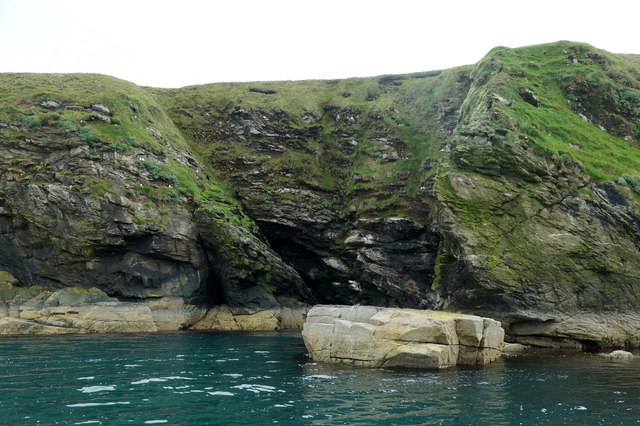
Mires of Bydons, located in the Shetland Islands, is a coastal marsh and saltings area that encompasses a diverse and unique ecosystem. This natural habitat is characterized by its wetland conditions, with a mixture of freshwater and saltwater environments creating a rich and complex landscape.
The Mires of Bydons is teeming with a wide range of plant and animal life. The marsh is home to various species of sedges, rushes, and grasses that thrive in the wet conditions. These plants provide habitat and food sources for numerous bird species, including waders such as redshanks, oystercatchers, and curlews, which can be observed foraging in the shallow waters.
The saltings area of Mires of Bydons is a unique feature, consisting of salt marshes that are periodically flooded by the tides. This creates a brackish environment, supporting a different array of plant species that are adapted to tolerate saltwater intrusion. Sea aster, saltmarsh grass, and sea arrowgrass are among the plants that thrive in this challenging environment.
The Mires of Bydons also serve as an important breeding ground for several bird species. The marshes provide ideal nesting sites and food sources for species such as lapwings and red-throated divers. These areas play a crucial role in supporting the biodiversity of the Shetland Islands and are protected as a Site of Special Scientific Interest (SSSI).
Visitors to Mires of Bydons can enjoy walks along designated paths that offer stunning views of the coastal marsh and saltings. The area is also popular among birdwatchers, who can observe the diverse birdlife from specially constructed hides. It is essential for visitors to respect the fragile ecosystem and adhere to any guidelines in place to ensure the preservation of this unique habitat.
If you have any feedback on the listing, please let us know in the comments section below.
Mires of Bydons Images
Images are sourced within 2km of 60.596892/-0.88050176 or Grid Reference HU6190. Thanks to Geograph Open Source API. All images are credited.
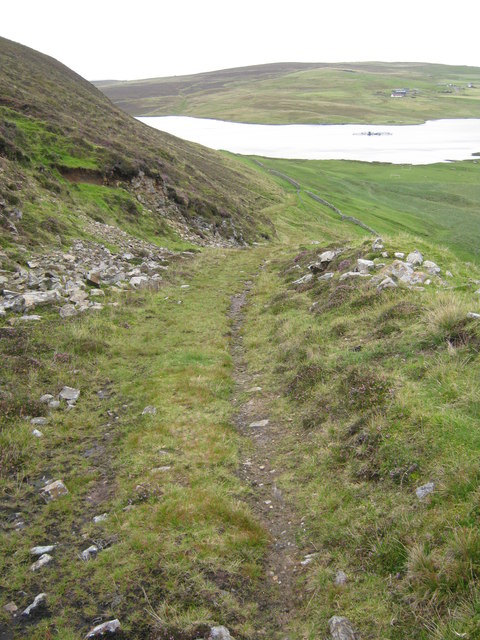
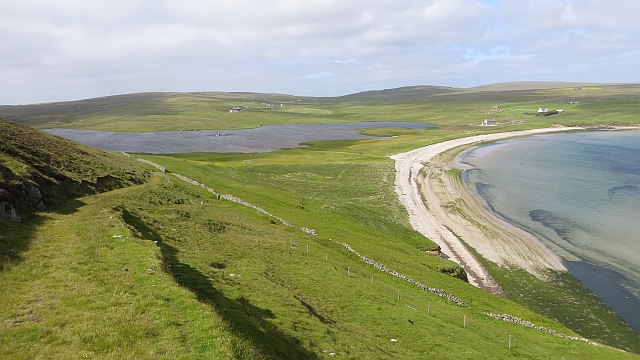

Mires of Bydons is located at Grid Ref: HU6190 (Lat: 60.596892, Lng: -0.88050176)
Unitary Authority: Shetland Islands
Police Authority: Highlands and Islands
What 3 Words
///professed.wasps.overpower. Near Houbie, Shetland Islands
Nearby Locations
Related Wikis
Fetlar
Fetlar (Scots: Fetlar) is one of the North Isles of Shetland, Scotland, with a usually resident population of 61 at the time of the 2011 census. Its main...
Haltadans
Haltadans, also known as Fairy Ring or Haltadans stone circle, is a stone circle on the island of Fetlar in Shetland, Scotland. This site is a ring of...
Funzie Girt
Funzie Girt (; Scots: Funyie Girt "Finns' dyke") is an ancient dividing wall that was erected from north to south across the island of Fetlar in Shetland...
Brough Lodge
Brough Lodge is a 19th-century Gothic mansion on Fetlar, one of the Shetland Islands, in northern Scotland. Built by the Nicolson family, who were responsible...
Urie Lingey
For other islands with similar names, see Linga (disambiguation) Urie Lingey is one of the Shetland Islands. It is between Fetlar and Unst, and Yell is...
Hamars Ness
Hamars Ness is a headland on the island of Fetlar in Shetland, Scotland. The name is from the Old Norse Hamarsnes meaning "craggy headland". A ro-ro ferry...
Hascosay
Hascosay (Scots: Hascosay; Old Norse "Hafskotsey") is a small island lying between Yell and Fetlar in the Shetland Islands, Scotland. == Geography and... ==
Sound Gruney
For other islands with similar names, see Gruney (disambiguation) Sound Gruney is one of the Shetland islands. It lies about 1.5 kilometres (0.93 mi)...
Nearby Amenities
Located within 500m of 60.596892,-0.88050176Have you been to Mires of Bydons?
Leave your review of Mires of Bydons below (or comments, questions and feedback).
